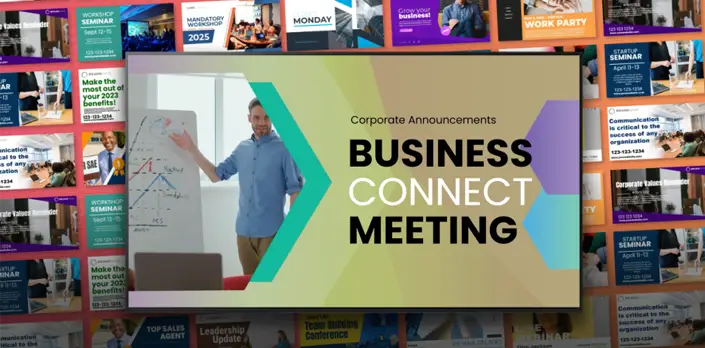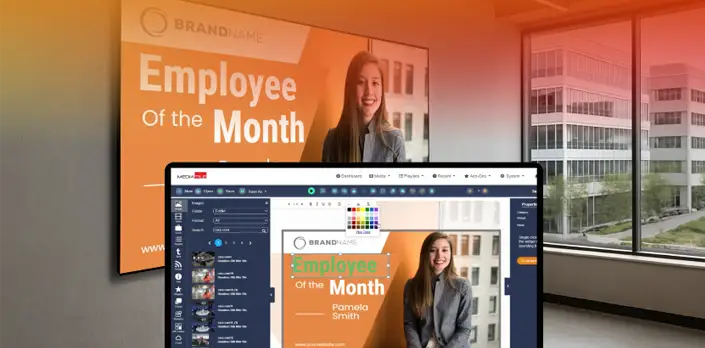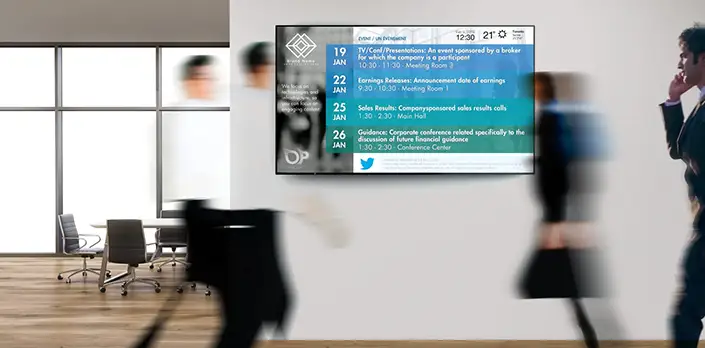The Do’s and Don’ts of Digital Signage in the Workplace
Digital signage drives communication when it is clear and consistent. Poor planning turns screens into noise. Follow these do’s and don’ts to make your signage effective and trusted.
Do set clear objectives
Without clear goals, your screens become cluttered and lose attention.
Define measurable goals
Choose one primary goal for each screen. Examples include promoting town hall attendance, sharing production KPIs, or alerting staff about safety changes. When you define the purpose of each screen, you avoid irrelevant content and keep messages focused.
Track progress with analytics
Use your signage platform’s analytics, QR scans, or employee surveys to see if messages are being noticed. Look for trends like increased attendance or faster responses to alerts. Review this data regularly so you can adjust content and placement based on what works.
Don’t overload your screens
Crowded digital screens turn viewers away and dilute important messages.
Keep it simple
Limit each message to a short headline and one key point. Use high-contrast text and clean backgrounds to ensure readability. Simplicity makes your content easy to process, even in busy areas where employees only glance at screens for a moment.

Focus on one message
Avoid cramming multiple updates into a single slide. Rotate messages instead. A single clear message on each frame improves comprehension and increases the chance your audience acts on the information.

Do keep your content fresh
Outdated content reduces trust and attention.
Use a content calendar
Plan updates in advance. Assign someone to refresh slides daily or weekly, depending on the content type. A calendar prevents old information from staying on screens too long and helps you maintain a steady flow of relevant updates.
Automate where possible
Connect your signage to real-time feeds for weather alerts, production dashboards, or emergency notices. Automated updates reduce manual work and keep your content relevant at all times.
Don’t ignore placement
Even the best content fails if nobody sees it.
Pick high-traffic spots
Place screens where employees naturally gather, like lobbies, break rooms, or production floors. Use hallway intersections where people pause, not pass-through areas where they move quickly.

Test for visibility
Stand where employees will view the screen and check readability. Watch for glare, poor angles, or obstructions. If the screen is hard to see or read, adjust the placement or brightness before launch.
Do tailor content to your audience
Relevant content keeps employees engaged and builds trust.
Segment your messages
Different teams need different updates. Sales teams benefit from real-time performance metrics. Operations teams need safety alerts. Everyone should see HR announcements and event reminders. Tailoring your messages keeps employees paying attention.

Use local context
Include shift details, site-specific data, or local contacts in your content. This small effort makes screens feel personal and valuable, especially in large or multi-location organizations.
Don’t forget to measure results
You cannot improve what you do not track.
Use multiple feedback tools
Pair platform analytics with employee surveys or direct feedback. This gives you a clearer picture of what messages stick and what gets ignored.
Adjust based on data
If certain content drives engagement, expand on it. If messages are consistently overlooked, change the format, timing, or placement. Small adjustments informed by data keep your strategy effective.






